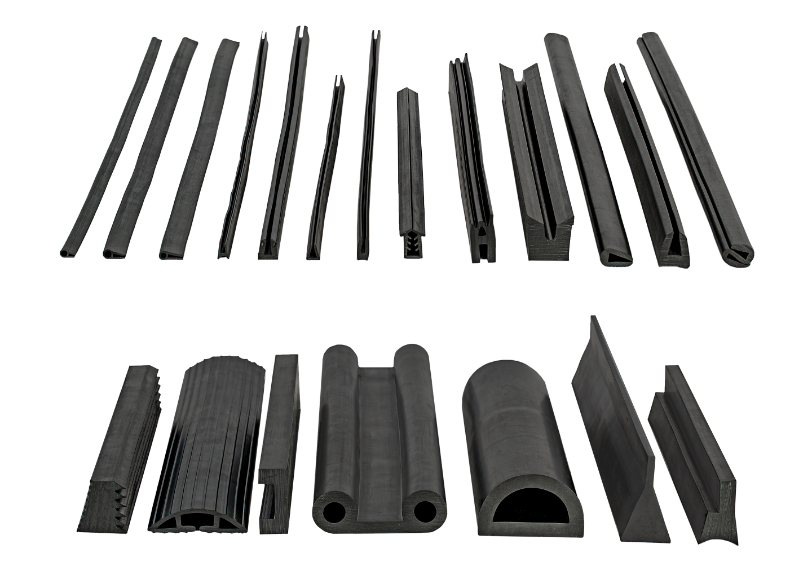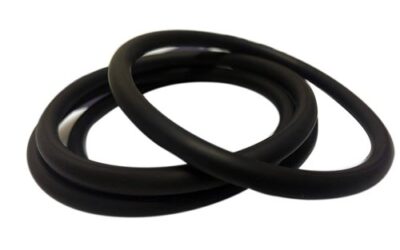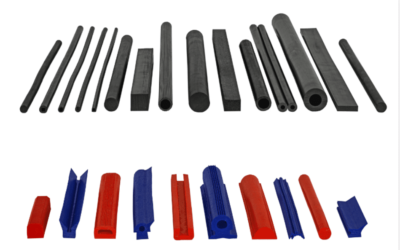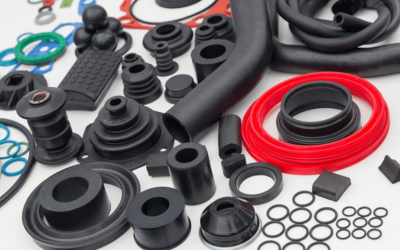One of the most commonly asked questions is what is the difference between sponge rubber and solid rubber?
The EPDM sponge rubber seal is one of the most used ones. One essential thing to determine between the two is whether these natural, synthetic and elastomers polymers come with elastic properties.
Both sponge rubber and solid rubber undergo vulcanization. Vulcanization is the process that uses chemical agents and heat like sulfur to enhance durability.
These are available in different compounds such as silicone, neoprene, and EPDM. One of the prominent benefits of sponge rubber and solid rubber is that it can be molded into a sponge rubber sheet and can be extruded into different shapes.
The most common difference between the two is air for both sponge rubber and solid rubber.
Sponge rubber has balloon-like cells and interconnected pockets that either allow it to hold air or even contribute to passing it. Nonetheless, solid rubber does not contain any cellular structure.
One of the most common places where sponge rubber and solid rubber is used includes offering insulation and sealing.
Nonetheless, sponge rubber can also contribute to the cushioning impact. Unlike sponge rubber, solid rubber offers excellent impact resistance.
Solid Rubber
Solid rubbers are very much different from sponge rubber sheets. The solid rubber cannot be drawn into sheets, unlike the sponge rubber sheet.
Solid rubber is available as hard, soft and medium too. In terms of rubber, a durometer is the measure of hardness, and it is further expressed in terms of the Shore A scale.
The soft rubber used for pencil erasers is in terms of durometer, and the measure is 40. However, those for hockey pucks have a durometer measure of 90. The difference ranges in terms of one type of rubber being harder than the other.
The solid rubbers are used for truck bumpers, shock absorbers, and anti-vibration pads for machinery, equipment and vehicles.
The solid rubber is industrial grade products which eventually reduces the risk of downtime and protects the mechanical parts.
The solid elastomers will eventually absorb the impact for rubber bumpers, and the truck strikes a loading dock. One of the common benefits of solid rubber seals and gaskets is to provide fluid containment and surface protection.
Sponge Rubber
Similar to solid rubber, sponge rubber is also available in various durometer measures. Although sponge rubbers are softer than other rubbers, this will always not be the case.
Although the gradings are different, it will also bring about a difference in the material’s hardness. It will also affect the ability to maintain the thickness of the rubber.
Unlike other rubbers, sponge rubber gasket material can provide a noticeable cushioning impact. Furthermore, these can also be over-compressed so that the sealing fails.
The sponge rubber sheet’s common applications include vibration dampening, weather stripping, shock absorption, cushioning, and soundproofing.
Other areas where sponge rubber is used include filters, custom gaskets, and thermal insulation depending on meeting approvals and standards. Although sponge rubbers can meet these requirements, it is necessary to maintain the standards and approvals.
How is sponge rubber used?
Sponge rubber is made of different elastomeric materials like silicone, neoprene, EPDM and nitrile. The profiles offer shock absorption and can help with good compression and recovery.
The sponge rubber sheets can be used for custom fabrication which can further help with value-added operations like that of gasket taping.
Although sponge rubber is compared to solid rubber, it is generally software and less resistant to compression. Sponge rubber comes with a strength-to-weight ratio.
The sponge rubbers are further used for medical sponges, prosthetic devices, medical filters, sterilization bags and electrocardiogram (ECD) pads.
Most of these sponge rubbers come with elastomeric components that can help with the passage of gases and water. These sponge rubbers can be helped with medical components, thereby helping with sitting up and getting up. The FDA approves the closed sponge rubber.
As the FDA approves these, it can help for medical applications as well as food contact. However, there is a significant difference between being FDA compliant and being FDA approved.
As a result, before beginning to choose a material, you should do proper research. Sponge rubbers can be helpful for hatches, enclosures and bulb seals. The trim seals are made of separate bulbs that can offer retainer sections made of different materials. However, the EPDM sponge rubber seal has the bulb portion.
How is sponge rubber made?
Sponge rubber has different densities because of its variant cellular structure. Depending on the hardness level, sponge rubber is divided into different groups such as soft, medium and firm.
According to experts, there are two types of sponge rubber- the closed-cell rubber and open-cell rubber.
The open-cell material has interconnected and open pockets that can make it easy for air, water and various chemicals to pass through.
This will only be beneficial if the material is not compressed. The closed-cell sponge rubber has balloon-like compartments or cells that can be beneficial for holding nitrogen gas, thereby preventing the passage of various substances across low pressure.
The addition of sodium bicarbonate to different materials in the heated mould helps to provide shape to open-cell sponge rubber.
However, for closed-cell sponge powder production, the chemical powder is decomposed in heat and pressure.
The release of nitrogen gas helps to provide a shape to closed-cell sponge rubber, thereby providing easy recovery and a robust compression setting.
Nitrogen is gas, but it produces no foam like various gaseous blowing agents that are often used in foam rubber.
Unlike others, foam rubber has open-cells which can be used in the production process.
Many foam rubber cells are closed and hence do not qualify for the ASTM test for water absorption, which is a staple requirement across the closed-cell materials.
Uses of sponge and foam rubber sheet
The foam and sponge rubber sheets are used across defence, racing, medical, nautical and aerospace industries.
However, various industries such as packaging, construction and glass companies have been using the foam rubber sheets. Since sponge rubber sheets are flexible, they are mostly used in the automotive industry.
Due to its flexible characteristics, the sponge rubber sheet is also known as porous rubber because of its properties and usage across various industries.
Depending on the selected grade and material, the sponge rubber comes with shock resistance, sealing and oil resistance. Sponge rubber is flexible and durable.
Furthermore, it also contributes to housing inserts, packing and security components across different industries.
What are the benefits of compression moulding in a sponge rubber sheet?
Compression moulding can provide several benefits for sponge rubber sheets. These sponge rubber gasket materials can be folded into large and complex parts irrespective of the use of flat washers.
The compression moulding can be cost-effective, which is more beneficial than other types of moulding. Furthermore, compression moulding can be beneficial for large parts that may be used across different materials.
The materials can turn out across moulded cavities, thereby providing less restriction for various bodyweight parts.
Takeaway
There’s a huge difference between solid and sponge rubber sheets. No matter what type of industry you are in, it is necessary that you pay attention to all the aspects.
The right compound will eventually make a difference, thereby maintaining the balance between cushioning and impacting resistance.
If you need any rubber products for any industry, you can rely on R-Tech Rubber Industries. They provide a variety of Rubber products & are renowned rubber manufacturers in India.
Difference between EPDM and Nitrile Rubber
Home Blogs Difference between EPDM and Nitrile RubberSynthetic rubber is an artificial man-made elastomer that is used in a vast...
Application and Benefits of Molded Rubber Products
Home Blogs Application and Benifits of Molded Rubber ProductsThe inescapability of rubber around us as different parts, materials,...
7 Benefits of using silicone rubber for window and door seals
Home Blogs 7 Benefits of using silicone rubber for window and door sealsA silicone rubber sheet is an elastomer made up of silicone-...
Locations
R Tech Rubber Industries : Rubber Products Manufacturers
📍- Raju Industrial Estate, 16 / A, near Western Express Highway, opp. Imperial Heights Building, Penkarpada, Mira Road East, Mumbai, Mira Bhayandar, Maharashtra 401107
📞- 09820030660
R-Tech Rubber Industries © 2021 All rights reserved





